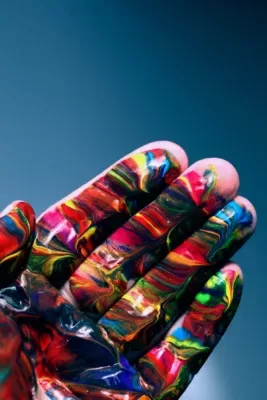
Unlocking Creativity : Shifting from Inherent Attributes to Developable Outputs
Creativity and innovation, often perceived as inherent attributes, are undergoing a transformation in how we understand and nurture them. It’s time to reframe these qualities as outputs rather than attributes, acknowledging that they can be cultivated and developed through deliberate practice and a growth mindset.
Redefining Creativity and Innovation Traditionally, we’ve considered creativity and innovation as innate attributes, inherent qualities that only a fortunate few possess. This perspective, however, limits the potential for creativity and innovation to flourish. By redefining them as skills attainable through dedication and a growth mindset, we unlock a world of possibilities. It becomes evident that anyone can tap into their creative potential and become an innovator, regardless of their starting point. It’s not about being born with a particular set of talents; it’s about nurturing and cultivating these skills over time.
The Role of Mindset Central to the development of creativity and innovation is the mindset we adopt. The growth mindset, a concept pioneered by psychologist Carol Dweck, revolves around the belief that abilities and intelligence can be cultivated through dedication and hard work.
With a growth mindset, challenges become opportunities for growth, not insurmountable obstacles. Failures are seen as stepping stones toward success, and learning from others is embraced. This mindset empowers us to approach problems with curiosity and a willingness to explore novel ideas.
Cultivating Creativity Creativity isn’t a product of happenstance but a skill honed through deliberate practice. Like an athlete or a musician, we can train our creative faculties to become more robust and versatile.
Divergent thinking is a valuable tool for cultivating creativity. It involves generating numerous ideas and solutions to a problem without judgment or evaluation. This unencumbered thinking allows us to unearth fresh perspectives and possibilities.
Embracing experimentation is another crucial aspect of nurturing creativity. We must be prepared to take risks and venture into uncharted territories, even if success isn’t guaranteed. Failure, an intrinsic part of the creative journey, provides valuable feedback and refines our ideas.
Fostering Innovation Innovation represents the application of creative ideas to address problems and create value. It’s the process of translating imaginative thoughts into tangible outcomes. To nurture innovation, we must cultivate an environment that promotes collaboration, encourages diverse thinking, and supports risk-taking.
Collaboration is a cornerstone of innovation since it rarely occurs in isolation. Through collective effort, we can blend different viewpoints and expertise to generate more innovative solutions. Diversity of thought is equally vital, introducing a plethora of ideas and approaches.
Lastly, cultivating a culture that champions risk-taking is paramount. Innovation thrives when individuals feel safe to experiment and make mistakes. Without this secure space for trial and error, creativity and innovation remain stifled.
In Conclusion Creativity and innovation aren’t reserved for a select few but are outputs achievable through dedicated effort. By adopting a growth mindset, engaging in creative practice, and fostering an environment conducive to innovation, we can all tap into our creative potential and emerge as innovators. This shift from perceiving creativity and innovation as inherent attributes to attainable outputs expands horizons and empowers individuals to realize their full creative potential.



